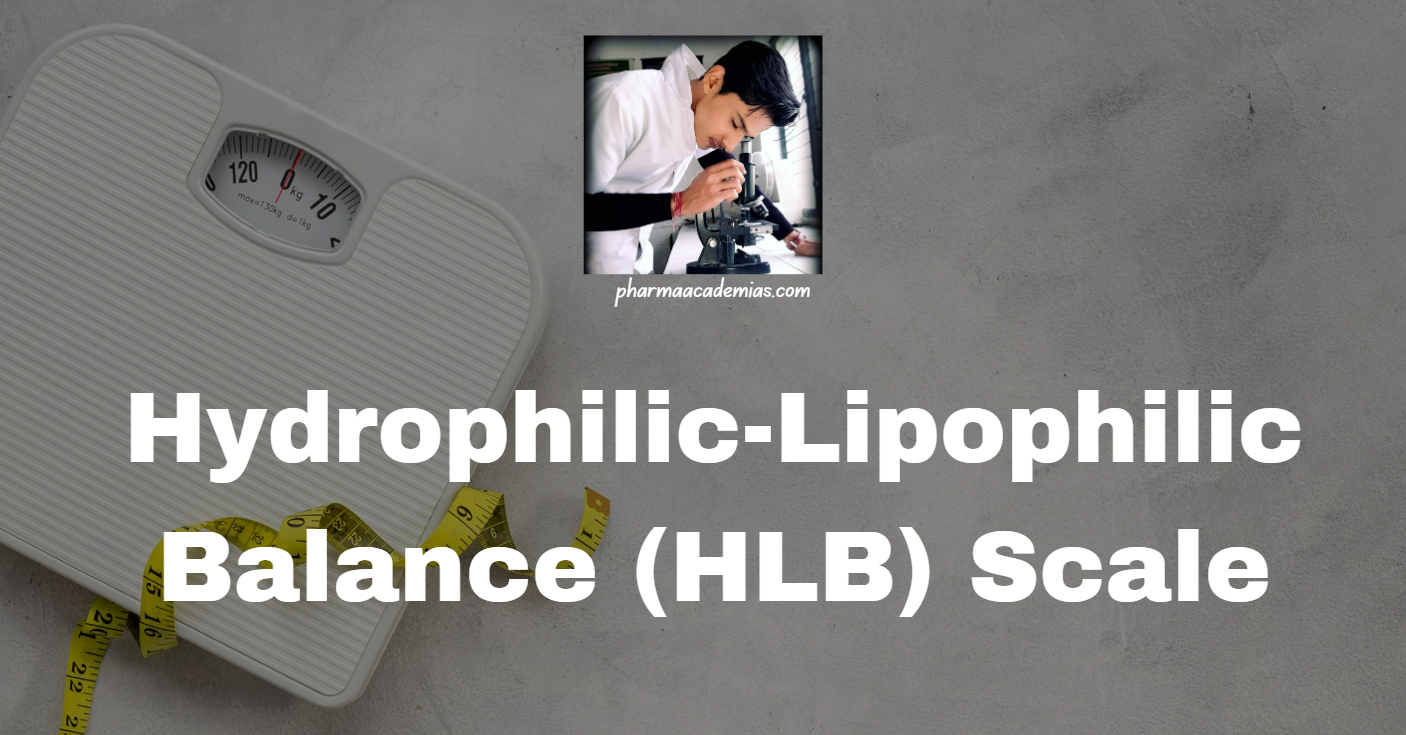The Hydrophilic-Lipophilic Balance (HLB) scale is a crucial tool in the formulation of surfactants and emulsifiers. It was developed to quantify and optimize the balance between the hydrophilic (water-attracting) and lipophilic (oil-attracting) properties of surfactant molecules. The HLB scale guides the selection of surfactants for various applications, particularly in the creation and stabilization of emulsions. This detailed note explores the principles, calculations, applications, and significance of the HLB scale in colloid and interface science.
Principles of HLB
1. Definition:
The HLB scale quantifies the degree to which a surfactant molecule possesses hydrophilic or lipophilic characteristics.
2. Hydrophilic and Lipophilic Groups:
Surfactant molecules typically consist of a hydrophilic head and a lipophilic tail.
The hydrophilic group interacts with water, while the lipophilic group interacts with oil or other hydrophobic phases.
3. HLB as a Scale:
The HLB scale assigns a numerical value to a surfactant based on its molecular structure, indicating the degree of hydrophilicity.

4. HLB Range:
The HLB scale typically ranges from 1 to 20.
Low HLB values (1-6) indicate lipophilic or oil-loving surfactants.
Intermediate HLB values (7-13) suggest surfactants with both hydrophilic and lipophilic characteristics.
High HLB values (14-20) represent hydrophilic or water-loving surfactants.
Calculation of HLB
1. Contribution of Components:
The HLB of a surfactant can be calculated by considering the contributions of its individual components.
The hydrophilic and lipophilic contributions are assigned specific values.
2. HLB Calculation for Blends:
For surfactant blends, the HLB values of individual components are weighted according to their proportions in the mixture.
3. Formulation Considerations:
The desired HLB value for a particular application guides the formulation of a surfactant system with the appropriate balance of hydrophilic and lipophilic properties.
Applications of HLB
1. Emulsion Stability:
The HLB value is crucial in formulating emulsions. Surfactants with the right HLB value can stabilize oil-in-water (O/W) or water-in-oil (W/O) emulsions.
2. Cosmetics and Personal Care:
In formulating creams, lotions, and other personal care products, the HLB scale helps select surfactants suitable for the desired texture and stability.
3. Pharmaceuticals:
In pharmaceutical formulations, the HLB concept aids in designing drug delivery systems and improving the solubility and stability of active ingredients.
4. Food Industry:
In food applications, the HLB scale is utilized for selecting emulsifiers that enhance the stability and texture of food products.
5. Agriculture:
The HLB concept is applied in formulating agrochemicals and crop protection products.
Significance of HLB
1. Formulation Precision:
The HLB scale allows formulators to select surfactants or blends precisely to achieve the desired emulsion characteristics.
2. Efficiency in Emulsification:
Matching the HLB of a surfactant to the required HLB of a system ensures efficient emulsification and stability.
3. Versatility:
The HLB concept is versatile and applicable to various industries, providing a standardized approach to surfactant selection.
4. Predictability:
HLB values offer a predictive tool, helping formulators anticipate the behaviour of surfactants in specific applications.
The Hydrophilic-Lipophilic Balance (HLB) scale is a foundational concept in the design and formulation of surfactants and emulsifiers. Its application spans diverse industries, influencing the stability, texture, and performance of emulsions in products ranging from cosmetics to pharmaceuticals. The systematic approach of the HLB scale provides formulators with a valuable tool for optimizing the hydrophilic-lipophilic balance to meet the specific requirements of various applications.

